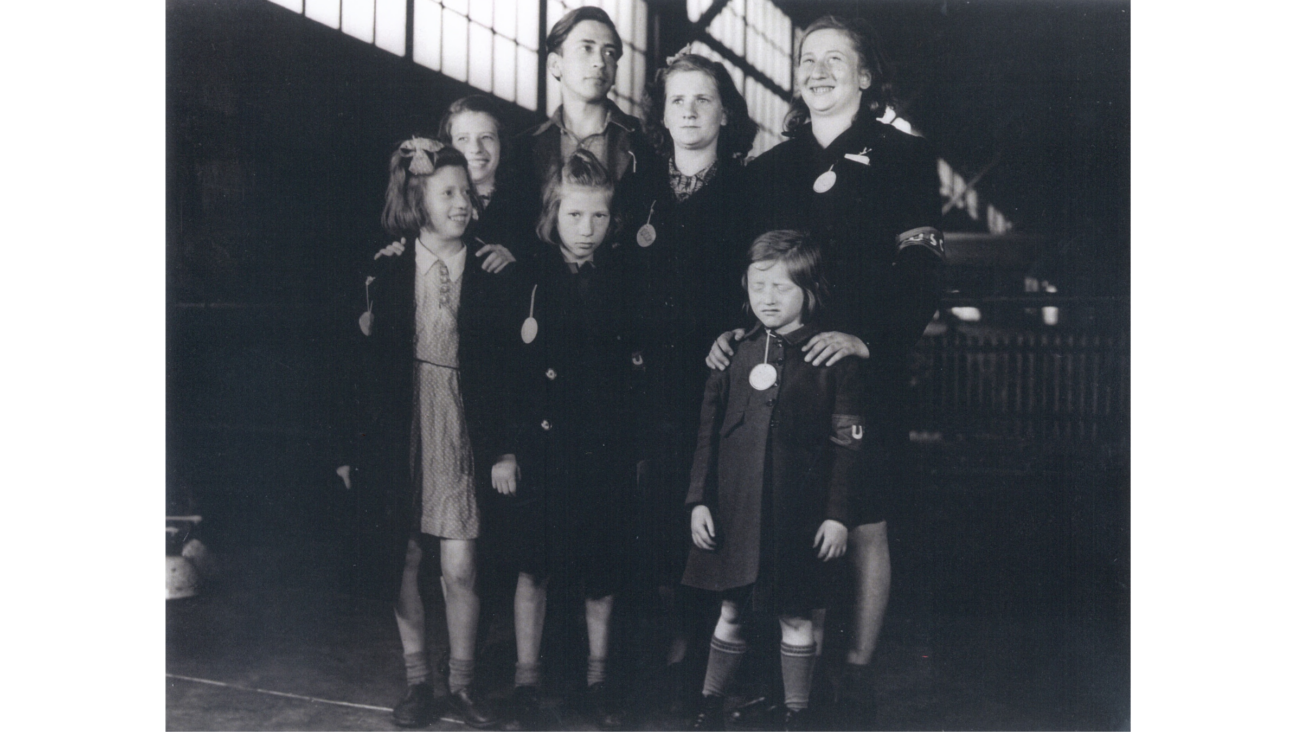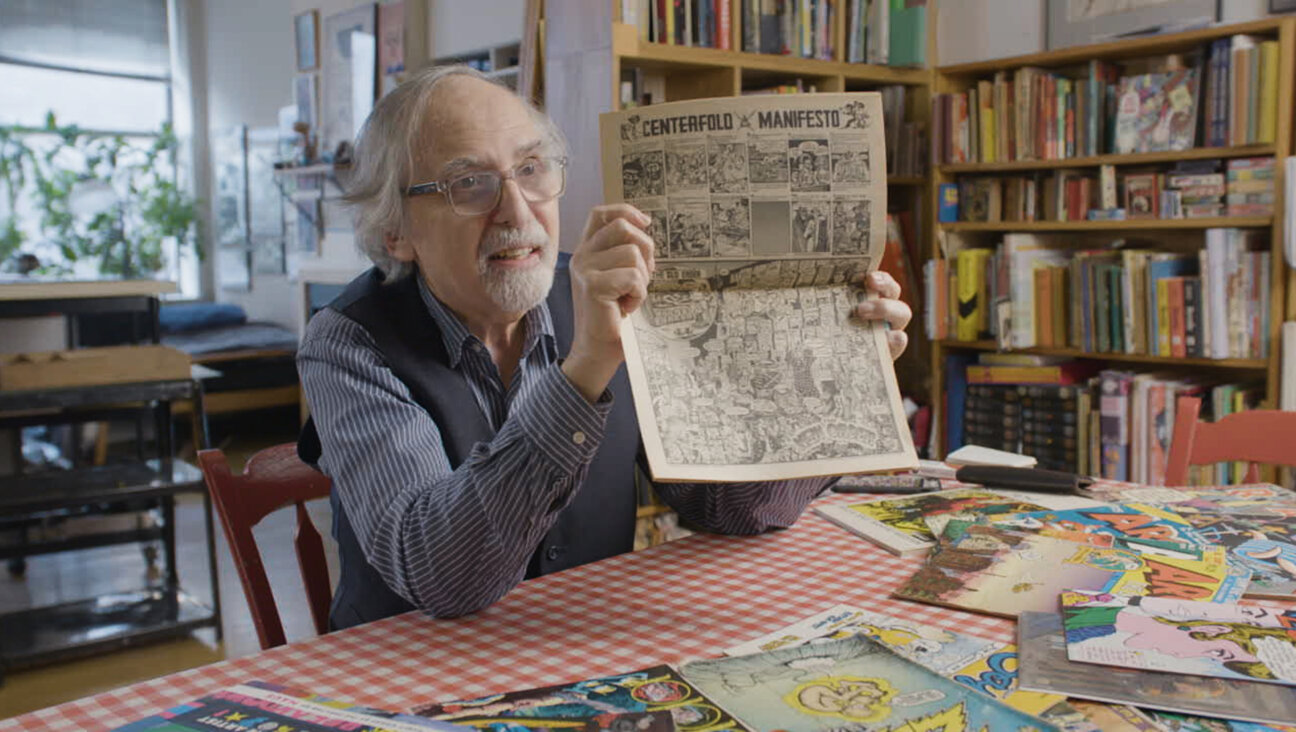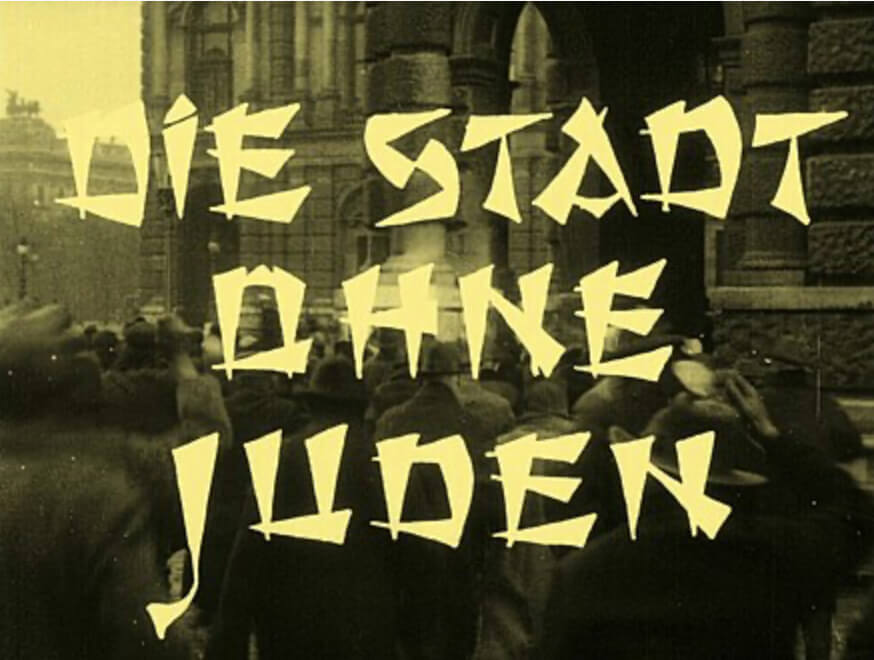A Most Unnatural Experiment With Nature And Nurture

Image by Three Identical Strangers
“It’s a lot darker than a Disney movie,” Paula Bernstein says to a chirpy talk show host who has just compared the magical coincidences of her separated-at-birth story to a fantasy from the wonderful world of Uncle Walt. The host is gobsmacked by the facts that Paula and her identical twin sister Elyse Schein both edited their high school newspaper, went to film school, and gesture in synch. The darkness befogging the fairy tale — chronicled in their 2008 book “Identical Strangers: A Memoir of Twins Separated and Reunited” — is that Paula and Elyse were separated for a special reason, and not because couples in the market for a child might not buy a two-for-one deal.
Up the ante by one and you have the trajectory and tragedy of “Three Identical Strangers,” a triple-threat bio-doc that starts off feeling good and ends up feeling very bad. Director Tim Wardle has a hell of a story to tell — about science and ethics, nature and nurture, and, hovering around the edges, Jews and their kinship networks — and he is smart enough not to mess it up by getting too flashy with his music cues, editing software, or dramatic reenactments. The story sells itself.
The film opens with a one-sided meet cute. In 1980, nineteen-year-old Bobby Shafran is behind the wheel of his beat-up Volvo driving to Sullivan County Community College in New York to begin his freshman year. Walking around the grounds on that first day, he finds he is already a BMOC: guys are high-fiving, girls are hugging, and every face beams with a flash of recognition that he does not feel. Funny thing, though — everybody is calling him Eddy. A friend of Eddy’s looks at Bobby and, even while his jaw is dropping, puts it all together. They cram into a phone booth, call a guy named Eddy Galland, and rush through the night to his home in Long Island. Eddy greets Bobby at the front door and the two gaze stupefied into the mirror that is each other.
So far, so heartwarming. Tipped to the tale of the twins, editor Howard Schneider of Newsday charters a plane (ah, the flush days of bygone print journalism) to fly up to Sullivan County to check out the too-good-to-be-true human-interest story. Soon photo spreads and seeing-double headlines are blanketing the New York tabloids — at which point the story ratchets up from the unbelievable to the un-effing-believable. In Queens, David Kellman sees a picture of himself, or rather two of himselves, in the New York Post. The duo is actually a trio. Their delight in each other is infectious, the sibling bond immediate. At first reunification, the boys (they will always be “the boys” to friends and family) are rolling around together on the floor “like puppies,” as David’s Aunt Hedy wistfully recalls.
The preserved-in-videotape media of the day has hit the trifecta: three good-looking, well-adjusted young men ready to enter into a symbiotic relationship of mutual exploitation. The boys revel in a celebrity cloudburst that extends beyond the fifteen minute cutoff. Magazines from People to Good Housekeeping bestow covers, and the morning talk show circuit of big-haired 80s name brands — Phil Donahue, Tom Brokaw, Jane Pauley — coos and gushes. The triplets nab a cameo appearance ogling Madonna in “Desperately Seeking Susan” and acquire an all-access pass into the sanctum sanctorum that was Studio 54. They milk it and they work it, synchronizing body movements and finishing each other’s sentences. Biology is not only destiny but great copy: they all like Chinese food, smoke Marlboro cigarettes, and prefer older women. No one can resist the “astonishing coincidences” in this “fairy tale story,” and no one seems to remember the genre is structured around abandoned and abused children.
More curious coincidences unfold. As infants, the boys were doled out to the three emblematic social classes in the American census: Bobby into the upscale home of a doctor father and lawyer mother, Eddy into the modest digs of a high school teacher, and David into an immigrant blue collar family. When David first hears that Eddy scored the doctor family, he feigns jealousy, but it is he who has won the adoption sweepstakes: his father is a bear-hugging Yiddishe papa known to all as Bubala. “I have two more sons,” he exults.
The boys were all placed by the same adoption agency, Louise Wise Services, specialists in matching Jewish children with Jewish families. Founded in 1916 by the wife of Rabbi Stephen S. Wise, the leading spokesman for Progressive-minded Reform Judaism in the last century, the agency abided by its original charter to place “dependent, neglected, or homeless Jewish children” in Jewish homes. The outfit became officially non-sectarian in 1953, but for New York-area Jews seeking babies within the tribe, it was the go-to adoption agency.
Lest anyone think ethno-religious matching was just a Jewish thing, New York State law at the time held that “when practicable, a child must be placed only with persons of the religious faith preferred by its natural parents, if they are married, or its natural mother if they are born out of wedlock.” Catholics tended to back the law; Jews didn’t because it depleted the pool of potential adoptees. In fact, Louise Wise Services was a pioneer in advocating for the adoption of children across racial and religious lines.
While the boys bask in the spotlight, the three sets of parents are furious at the Wise agency for not revealing that each of their sons has two identical twin brothers. At a tense meeting, they confront members of the executive board, who explain that breaking up the set was the best way to find a place for them. “I would’ve taken all three!” Bubala shouts. And then, a genuinely sinister moment: After the meeting with the board concludes, Bobby’s father realizes he has forgotten his umbrella and goes back in to the conference room to retrieve it. He spies the board members literally breaking open a bottle of champagne, celebrating as if they have just dodged a bullet.
They have. Louise Wise Services — presumably with the knowledge of its revered president, Justine Wise Polier (1903-1987), the first female Justice in New York and a famous advocate for children’s rights — was a willing accomplice in a secret experiment, audacious in its scope and breathtaking in its casual cruelty: a study that separated identical twins at birth and then tracked their developmental progress to try to crack the old chestnut about nature versus nurture.
The experiment was cooked up and overseen by Dr. Peter B. Neubauer, a prominent child psychiatrist at New York University’s Psychiatric Institute. An Austrian Jewish refugee from Nazism who came to the United States in 1941, he was a strict Freudian (sample work product: “The One-Parent Child and His Oedipal Development”) and well-known scold about the effects of violence and horror in television and motion pictures (the most traumatizing film in his inventory? “The Wizard of Oz”).
Before lurching back in shock at Dr. Neubauer’s house of pain, it is important to remember the historical context, insists Natasha Josefowitz, who as a young woman worked for Dr. Neubauer. She has a point. Whether in law enforcement (J. Edgar Hoover) or child rearing (Dr. Spock), postwar American culture was in thrall to all manner of alleged experts. Life had become too complex and bewildering to trust to the general practitioner. To later generations, the deference to men in white coats and brown-shoed agents of the state might seem baffling, but the twin study was “not something that seemed to be bad,” shrugs Josefowitz, recalling what an “exciting time” it was for social scientific explorers seeking to map the frontiers of human behavior.
No expert gained a higher profile in postwar America than the psychiatrist. For all the self-defensive jokes about head shrinkers, he provided an affluent but anxious culture with explanations for deviance and dissatisfaction. Reassuringly, he advised that the animating source for personal discontent was not economic or political but locked deep within the human mind. From, say, Alfred Hitchcock’s “Spellbound” to Nunnally Johnson’s “The Three Faces of Eve,” Hollywood reinforced the psychic authority with a pop curriculum in Freudian theory wherein the shrink supplanted the detective as the heroic ratiocinator. No wonder, when asked to describe Dr. Neubauer, the first word that comes to mind for Josefowitz is “sexy.”
Speaking of experts, director Wardle consults one of his own, the journalist and Pulitzer Prize-winning author Lawrence Wright, who probed the phenomenon of twins and the literature on twin studies for a lengthy article in the New Yorker in 1995. As Wardle listens in, the pack-rat journalist dredges up a cassette recording from his copious files and plays a brief interview he conducted with a flustered, stonewalling Dr. Neubauer. Wright wrote that Neubauer “believed at the time [he initiated the twin study] that twins posed such a burden to parents, and to themselves in the form of certain developmental hazards, that adopted twins were better off being reared apart from each other.” Perhaps — but twins reared apart from each other would certainly be perfect guinea pigs on which to test a nature-nurture hypothesis.
Once deposited in the Petri dish of their adoptive families, the triplets and several pairs of identical twins were monitored throughout their childhoods. The boys received regular visits by a two-person tag team of researchers who administered a battery of intelligence, psychological, and physical tests, filmed in Super 8mm. The researchers say nothing to the parents about giving the exact same tests to two other children in different locations, brothers of the specimen under the microscope — all of whom, as David seethes, lived within 100 miles of each other.
The study began in 1960 and ended in 1980 when the triplet story broke, another coincidence. A final report interpreting the findings was never written and the files were locked away. Wise Services closed shop in 2004, Neubauer died in 2008, and the guardians of both realms and reputations would just as soon keep the lid on. Before his death, Neubauer deposited his archives at Yale University library, with the stipulation that the records related to the twin studies not to be opened until 2066.
Unlike Dr. Neubauer, however, director Wardle needs to submit a summing up — to trace the three objects of his case study to full maturity. After the rush of reunification and celebrity dies down, the boys open up that most 1990s of New York businesses, a restaurant, called, of course, Triplets, where the trio of proprietors and not the dishes are the main attractions. “We cleared over a million dollars the first year,” says David. Eventually, the boys all get married, to notably different female types. Each wife, touchingly, believes she got the pick of the litter.
But fissures in the genetic bond begin to appear. Bobby is the first to bail from the act,. Eddy, the most gregarious of the three, takes the break-up hard and the manic energy and mood swings he always exhibited are diagnosed as bipolar disorder. Eddy is not alone: it turns out that all the boys grew up troubled enough to be under psychiatric care as children. Wardle slyly undercuts the good-golly media coverage from 1980 by rewinding the same images in the light of the grimmer parallels in the lives. When a suicide makes the triplets twins, the cause of science exacts its highest price.
The boys — and the film — are blessed with a network of wise and observant friends and relatives who share their memories and provide a series of loving insights that the credentialed experts might heed. None is more astute than David’s Aunt Hedy, who notes that unlike real siblings who grew up together and learned to negotiate grievances, the boys really are strangers, that shared genes are no substitute for years of squabbling in the breakfast nook. She also conjures the terror and emptiness of the boys as six-month-old infants, once side by side, now alone in separate cribs.
“Three Identical Strangers” raises, but balks at fully exploring, another kind of triangulation. The hands that rocked this particular cradle are all part of a circular loop of backchannel Jewish influence: Louise Wise Services (the Jewish adoption agency), Dr. Neubauer (the Jewish refugee from Austria), and the (presumably Jewish) New York law firms who refuse to take the parents’ civil case against Louise Wise Services so as not to sully relationships with the baby brokers: Each law firm the parents approach has a partner who hopes to adopt a baby through the agency and thus must decline the case because of a conflict of interest.
The not-so-sub text here is: How could Jews — of all people — orchestrate so chilling an experiment on their own infants? The distant echo of Dr. Mengele’s twin experiments at Auschwitz is spoken aloud by David. “Nazi shit,” he says, sickened “that people split us up and studied us like lab rats.” David’s Aunt Hedy remarks that as people “coming from the Holocaust,” the tribal DNA, as it were, should have shrunk back instinctively. It didn’t.
Dr. Neubauer was no Dr. Mengele and his Twins/Triplets study was no Tuskegee Experiment, but it was bad enough. By the end of “Three Identical Strangers,” the question Neubauer was probing has long since become moot and the one that hangs in the air is what were he and his accomplices thinking when they experimented on babies and the good-hearted families who wanted only to nurture a child because such was their nature.
Thomas Doherty is a professor of American Studies at Brandeis University and the author of Show Trial: Hollywood, HUAC, and the Birth of the Blacklist (Columbia University Press, 2018).
A message from our Publisher & CEO Rachel Fishman Feddersen

I hope you appreciated this article. Before you go, I’d like to ask you to please support the Forward’s award-winning, nonprofit journalism so that we can be prepared for whatever news 2025 brings.
At a time when other newsrooms are closing or cutting back, the Forward has removed its paywall and invested additional resources to report on the ground from Israel and around the U.S. on the impact of the war, rising antisemitism and polarized discourse.
Readers like you make it all possible. Support our work by becoming a Forward Member and connect with our journalism and your community.
— Rachel Fishman Feddersen, Publisher and CEO





























